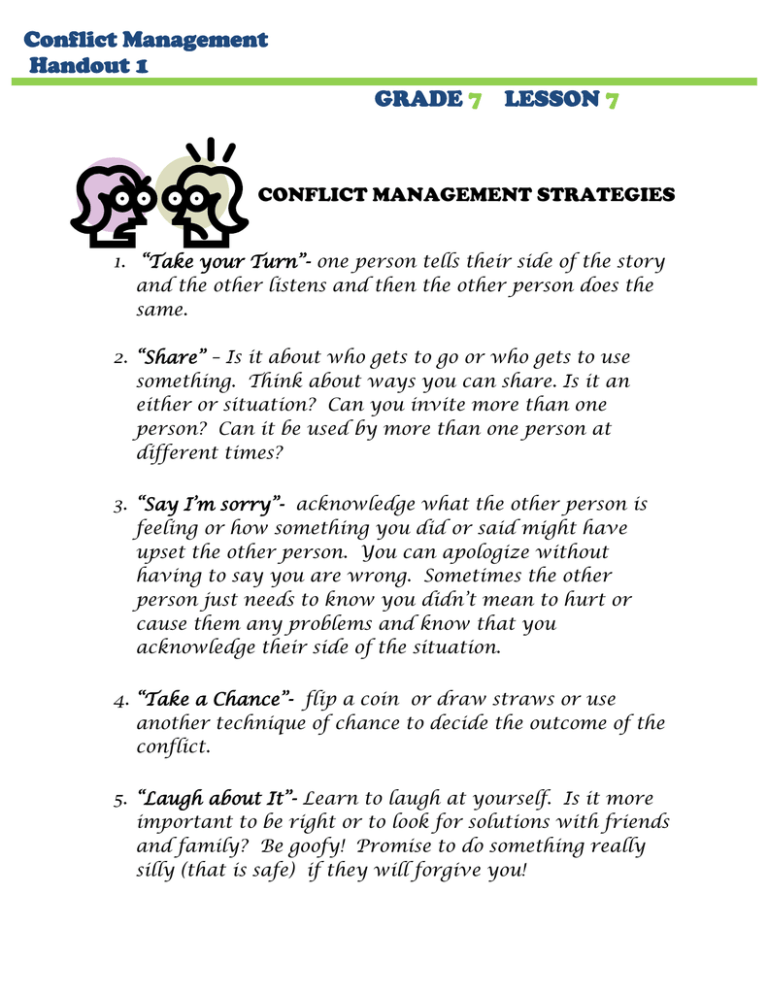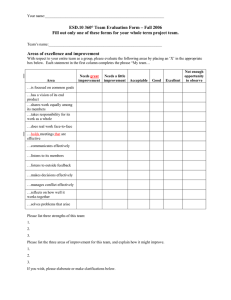Conflict Management Handout 1 GRADE
advertisement

Conflict Management Handout 1 GRADE 7 LESSON 7 CONFLICT MANAGEMENT STRATEGIES 1. “Take your Turn”- one person tells their side of the story and the other listens and then the other person does the same. 2. “Share” – Is it about who gets to go or who gets to use something. Think about ways you can share. Is it an either or situation? Can you invite more than one person? Can it be used by more than one person at different times? 3. “Say I’m sorry”- acknowledge what the other person is feeling or how something you did or said might have upset the other person. You can apologize without having to say you are wrong. Sometimes the other person just needs to know you didn’t mean to hurt or cause them any problems and know that you acknowledge their side of the situation. 4. “Take a Chance”- flip a coin or draw straws or use another technique of chance to decide the outcome of the conflict. 5. “Laugh about It”- Learn to laugh at yourself. Is it more important to be right or to look for solutions with friends and family? Be goofy! Promise to do something really silly (that is safe) if they will forgive you! Conflict Mediation Handout 1 GRADE 7 LESSON 7 6. “Sidetrack”- focus on something that is not related to the problem. Perhaps there is a fun school event that’s coming up that you can talk about or compliment their outfit. It may make the issue not seem as important. 7. “Get some help”- ask a neutral person to listen to both sides and try to come up with a solution when the issue is too complicated or you can’t come to a solution. 8. “Put it off”- individuals agree to wait for a more appropriate time to handle the situation. 9. “Leave it Alone or Agree to Disagree”- move away from a situation when there doesn’t seem to be an answer. Agree to disagree on this one situation. It doesn’t mean you can’t still be friends. 10. “Compromise and Negotiate”- Have each person talk about all the possible solutions to a situation. Look for alternatives to the way each side wants as ‘the only solution” Each individual will talk about their position in the conflict while the other person listens and gives another possible solution. Switch off back and forth until an agreed upon compromise can be reached! Both parties may have to give up something to resolve the conflict.

